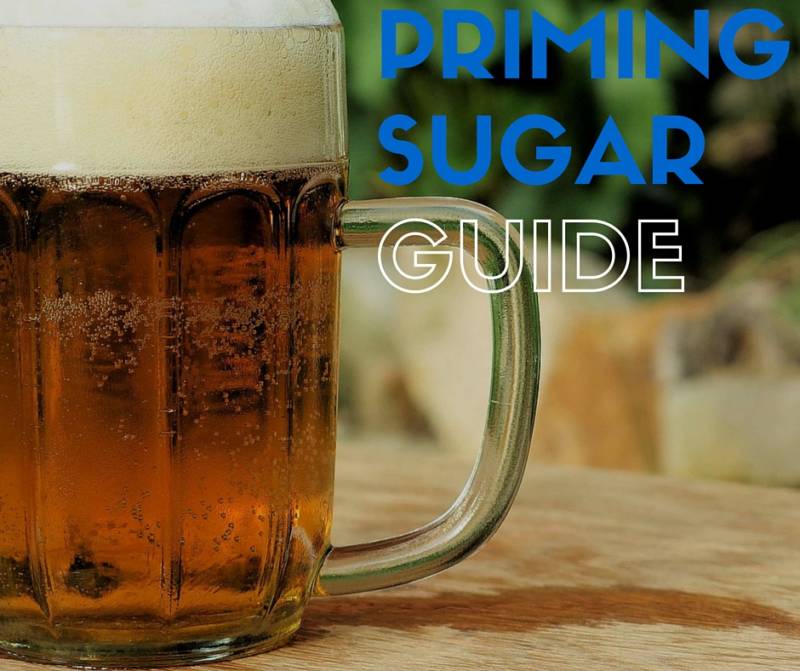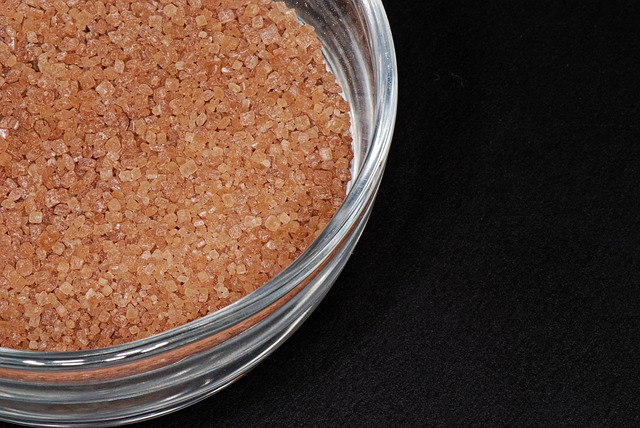Using Priming Sugar & Carbonating Your Beer
Priming with sugar is one of those subjects that gets overlooked. The way a beer is carbonated has an important role in the way the beer tastes and is perceived by the person drinking it.
Priming a beer is something you’ll have to do for each and every beer you brew from your very first batch. In essence you are adding more fermentable sugars to the beer just prior to bottling or kegging in order to add fizz to the beer.

First though I want to recommend that you do not use carbonation tablets. These little tablets of sugar whilst being convenient to just drop into each bottle give you no real control over carbonation and are an expensive way to buy a simple sugar that you could have just bought at the supermarket.
Table of Contents
How Much Priming Sugar Do I Need?
The easiest way to work out how much priming sugar is needed is to use a simple calculator, there are a few to choose from online and in most brewing software. In fact we have a priming sugar calculator right here. Enter in three figures and click a button and you have the answer, it doesn’t get much simpler.
If you want to know how those calculators work it becomes slightly more complex. To calculate how much priming sugar you’ll need in a batch of beer you first need to know a few things:
- How much beer you have made
- How much carbon dioxide is already in the beer
- How much carbonation you want to add
The first point is easy, you know how much beer is in the fermenter. How do you know how much carbon dioxide is already in the beer though?
The level of CO2 already in the beer is affected by the temperature of the beer at the end of the fermentation. The colder the beer is, the higher the level of CO2 or residual carbonation.
This level of residual carbonation, and carbonation in general, is measured as “volumes of CO2”. The term volumes of CO2 is a way of measuring the level of carbonation in your home brew. What this means in basic terms is that for 1 volume of CO2, theres is 1 litre of carbon dioxide is dissolved into 1 litre of liquid which in our case is beer.
| Temperature °C | Temperature (°F) | Volumes CO2 |
|---|---|---|
| 8.33 °C | 47°F | 1.21 |
| 10.0 °C | 50°F | 1.15 |
| 11.7 °C | 53°F | 1.09 |
| 13.3 °C | 56°F | 1.04 |
| 15.0 °C | 59°F | 0.988 |
| 16.7 °C | 62°F | 0.94 |
| 18.3 °C | 65°F | 0.894 |
| 20.0 °C | 68°F | 0.85 |
| 21.7 °C | 71°F | 0.807 |
| 23.3 °C | 74°F | 0.767 |
| 25.0 °C | 77°F | 0.728 |
| 26.7 °C | 80°F | 0.691 |
| 28.3 °C | 83°F | 0.655 |
As you can see the lower the temperature of the beer the higher the volume of CO2 or carbonation.
The higher the volume of CO2 already in the beer the less priming sugar you need to add.
How Many Volumes of CO2 Do I Need To Add?
Most bottled beers are carbonated to between 1.5 and 3 volumes of CO2. If the figure is too low the beer will feel too flat and not fizzy at all, too high an the beer will gush out of the bottle when you open it, or even worse the pressure will break the bottles.
Check out this post for a list of carbonation levels for different beer styles.
Amount of Priming Sugar Needed?
This table shows the amount of priming sugar needed in a 20 litre batch held at ambient temperature of 18°C / 64°F
| Low | Medium | High | |
|---|---|---|---|
| Grams of Sugar (Dextrose) in 20 Litre Batch | 75 | 118 | 150 |
| Volumes of CO2 | 1.9 | 2.4 | 2.8 |
If your beer is cooler you’ll need less sugar, check out the calculator linked above to try the calculations for yourself.
What Sugar to Use For Priming?
When it comes down to what you use as your priming solution you can really choose from a variety of fermentables. As long as what you are adding provides fermentables for the yeast to convert to alcohol and carbon dioxide the choice is up to you.
Some fermentables, like simple sugars, fall into two categories they either add flavour or are flavourless. Simple sugars like sucrose or white table sugar will add fermentables but no flavour. Dark brown sugar or honey will add fermentables and flavour in a small amounts and the dark brown sugar may add a touch of colour as well.
The thing to note about choosing a priming sugar is that they can add slightly different amounts of fermentables relative to their weights.
An example is that you will need to add 15% more sugar by weight if you use dextrose compared to using sucrose.
Liquid sugars like honey and syrups can all have slightly different levels of fermentables by weight from one variety to the next, this make priming with them a bit less accurate. A ballpark figure would be that you need around 30-40% more by weight if you are using honey instead of sucrose and 40-50% more by weight of maple syrup.
This calculator from Northern Brewer has some good advice regarding priming with more exotic sugars
How To Add The Priming Sugar To The Beer
The best way to prime your beers just prior to bottling or kegging is by creating a priming sugar solution. This method ensures the most consistent carbonation across the whole batch and is the most hassle free way to do it.
Measure Your Sugar
It is best to get some scales to measure your sugar. Try and avoid cups and spoonfuls, we want to be precise here to avoid over-carbonating or under-carbonating the beer.
Weigh out the amount of sugar you need for your batch of beer and put it in a pan with twice that amount of water. Boil the priming solution for 5 minutes and then allow to cool.
This simple priming solution can then be poured into the bottling bucket and the beer can be syphoned from the fermenter into the bottling bucket. The action of doing this should help to thoroughly mix the beer and priming sugar solution. If you don’t use a bottling bucket the priming solution can be gently stirred in the fermenter.
That’s all there is to it. The beer can then be bottled and in a few weeks time you’ll have just the amount of carbonation you want in the beer.





There is nuance to the temperature tho. If you cold crash your beer at the end of the fermentation, but fermentation is essentially complete, you probably won’t end up with the commensurate level of carbonation for the final temp.
Good point, the calculators I linked to at Brewers Friend take the temperature of the beer into account to a certain extent. There may be some variation of course.